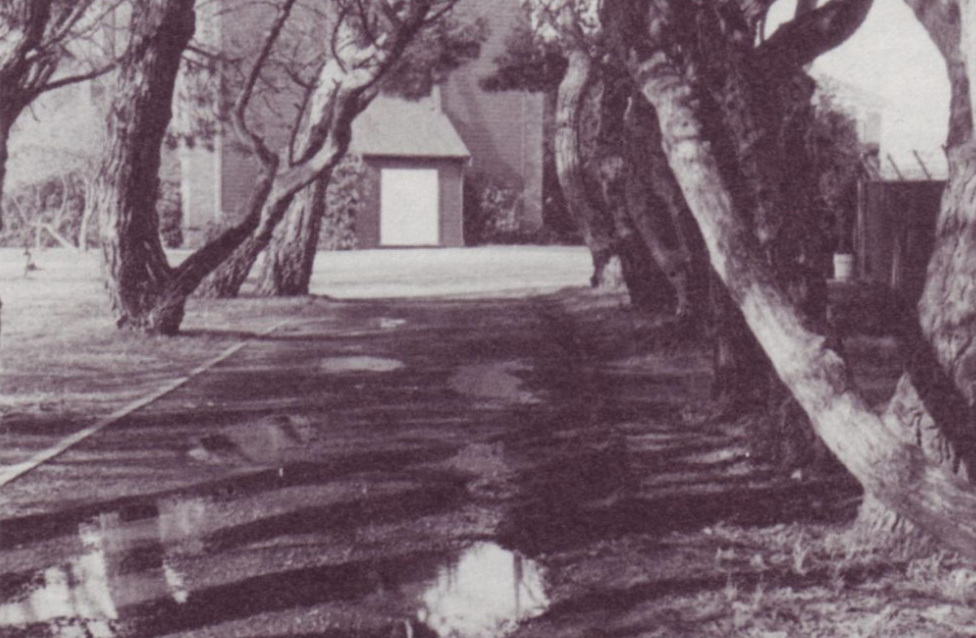The Violet Town’s ANZAC Avenue of Remembrance was established in 1917 to commemorate the service and sacrifice of local district enlistees in WW1.
Originally 65 trees were planted (with a few extras). The double row of trees extended on both sides of Cowslip Street (Violet Town – Murchison Road) from Lily Street west to just beyond the cross roads with McDiamards Road and Orchid Street – and along one side each of the latter for almost 200 metres.
AN ANZAC AVENUE FOR
VIOLET TOWN
OPENING CERMEONIAL
The shops closed on Saturday after noon to allow the residents to take part in the opening ceremonies connected with the “Anzac Avenue.” Shortly after three o’clock there was a large attendance at the comer near Harcourt’s, from whence the avenue is to extend along Murchison road.
Mr L. Ewert (chairman of committee) said -Ladies and gentlemen,-We are gathered to-day to plant an avenue of trees in honor of our soldiers. The intention was to plant a tree for each soldier who had gone from the shire but we could not get the whole, work done, and rather than postpone the tree-planting, decided to cover the space available. The committee decided that each person who worked should plant a tree for some soldier, either brother, relative or friend, and next year we hope to plant one for each soldier who has gone, as well as those who have since joined. It was a pleasure to see Mr Palmer present who would name the avenue), and also the President, councillors, and officials of the shire, some fresh from the elections and looking well (laughter). He called upon Mr Palmer to perform the opening ceremony.
Mr Palmer, who was received with applause, said, – I thank you sincerely for asking me take part in this ceremony. It is an important event and I don’t think we could be better occupied than in seeking to commemorate the names of those who are fighting our battles. I know you held a memorial service lately. There is a special halo of glory attached to those who have paid the supreme sacrifice ; but planting this avenue is not only a permanent memorial to them, but also to those who are wounded and the unwounded ones. Those who had the good fortune to come back would be a better quality of citizen, for there is no doubt that those who go to the war gain wonderful experience, as it is a world wide war. This planting of trees is a wise thing to do. People would never be able to pass the trees without thinking of the soldier or soldiers they were particularly interested in, who went to war to fight our battle-. Personally he had the honor of planting a tree in the name of a nurse (Miss Lily Mackay). Nurses were doing great work. At no previous war have the wounded been so well cared for as in this one. Two sisters had gone from the shire (Misses Lily and Maud Mackay).
The men’s part was to kill, and the women’s to heal. Australia had played a noble part, over 300,000 men had gone to the war. None before, war could have conceived of raising such a body of soldiers. Every soldier had played his part. In the old country was heard nothing but praise for them. He would like to mention troubles on our own shores. There could only be one Government to represent the people as a whole, and no section has the right to enforce others. The strike trouble has now reached Adelaide, and in Melbourne “there was turmoil. The mass of men were loyal sons of Empire, but had been induced to think they can overthrow Government. Everyone must prove a worthy part of the Empire and help to repress those who defied authority. He was quite satisfied that if the Win-the-War Government loses control of forces of men we shall suffer. We must win the war. Our soldiers are doing their best, and shaming men who are not. Some think we should not fight. We were forced into it. If Australia was under Germany there was no man who would not suffer by the change.
Every one must put his shoulder to the wheel. It will help our soldiers when they hear that trees have been planted in their honor at home, and nerve them to nobler deeds. It is to be hoped that many more towns will follow this example (applause). It now devolves on me to declare name of the avenue, “Anzac.” (prolonged applause.)
Cr A. Gordon, Shire President thanked the committee, on behalf of the council, for the invitation to be present. He was pleased to see so many there to do honor to our soldiers, those men who have gone to fight our battles. He did not know how things would have been with Australia if they hadn’t. Australia would have been looked down on for generations to come, if it hadn’t done its part. The nurses who had gone deserved much credit. Their fame is not pro claimed far enough. Where would wounded and dying be if it were not for them ? (Applause )
Cr .McShane said -It gives me much pleasure to be pre-sent and help to plant one of the trees to honor our lads. One of the speakers said the councillors were looking fresh and well. He could personally say that he was feeling well, and hoped electors would always think as much of him as they did on Thursday week. (Applause.)
Cr R. Mitchell said – It gives me pleasure to be here, and I desire to thank the committee for their invitation. All we can do in honor of the soldiers is not half what they deserve. Violet Town has contributed her share. I would like to mention one family “the parents are present” who have sent five sons but I am very sorry to say that one, and very possibly two, would not return.
Cr G. White expressed his pleasure at being present. One speaker had said they were looking well after elections, and he felt well as far as elections went, making a speech on a lorry was taking more out of him (laughter.) He was sorry not to have been at any of the working bees. He was ready to come one Saturday, but it turned out a wet afternoon, and he beard that there was no working. He would be pleased to do anything he could to help in the future, and was present representing Boho, which was a warm little corner. Two families had sent nine boys to the front, and another family two sons. He was proud of being a Boho boy, and hoped to see all return safely, also doctors, nurses, and chaplains (applause).
Rev. W. A. Williams, secretary of the movement, proposed a hearty vote of thanks to Mr. Palmer for naming the avenue, and to the Shire Council and officials. He hoped posterity, viewing the trees, would say. “Those were planted in honor of the boys who fought for us, our king, and country.”
Mr F. Peacock seconded, expressing the hope that the council would see its way to vote a liberal sum towards the construction of the avenue.
The vote was carried by acclamation, and was suitably acknowledged by Mr Palmer.
Tree-planting then commenced in earnest, many willing hands assisting. In all, 65 trees were set out, according to the official list, but a few others were planted later, the records of which were not handed in.
Violet Town Sentinel (Vic. : 1894 – 1946), Tuesday 4 September 1917, page 3
Click here to see the record of trees planted (PDF courtesy of Monument Australia)
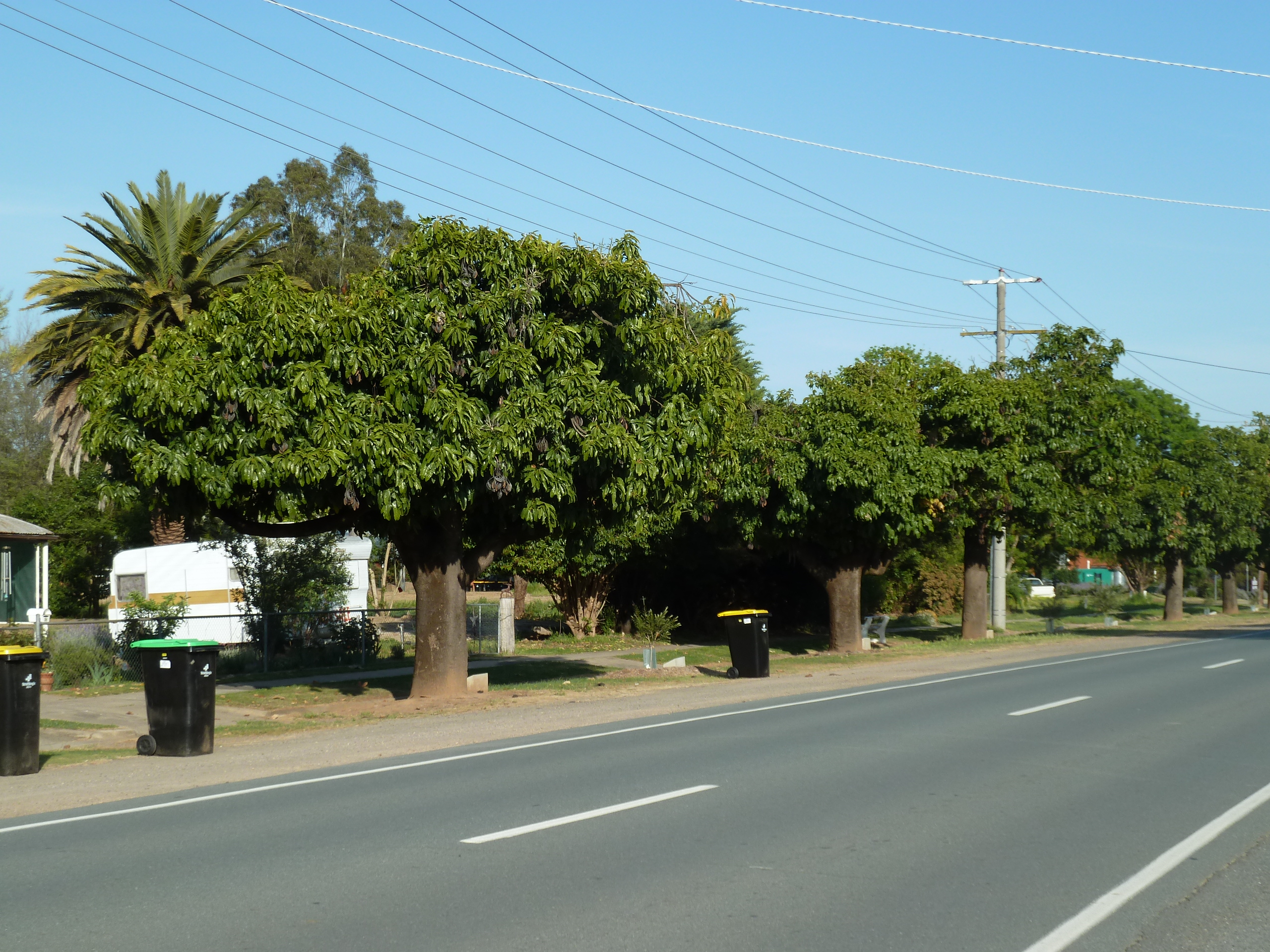 |  |  |
All plaques were removed in 2014 and refurbished, and old trees were removed and new ones planted. The Avenue was rededicated on 22 March 2015.
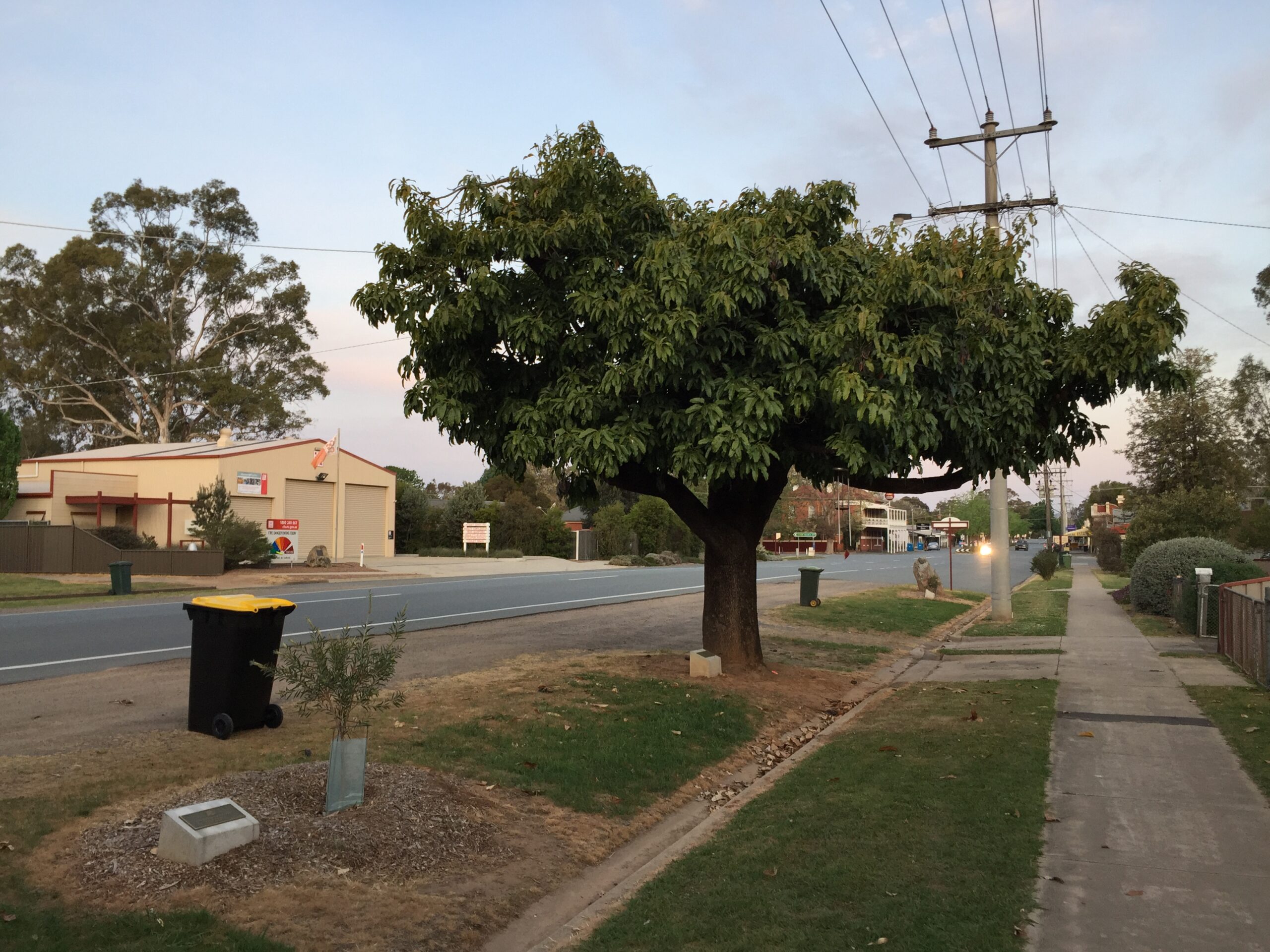 |  |
 |  |
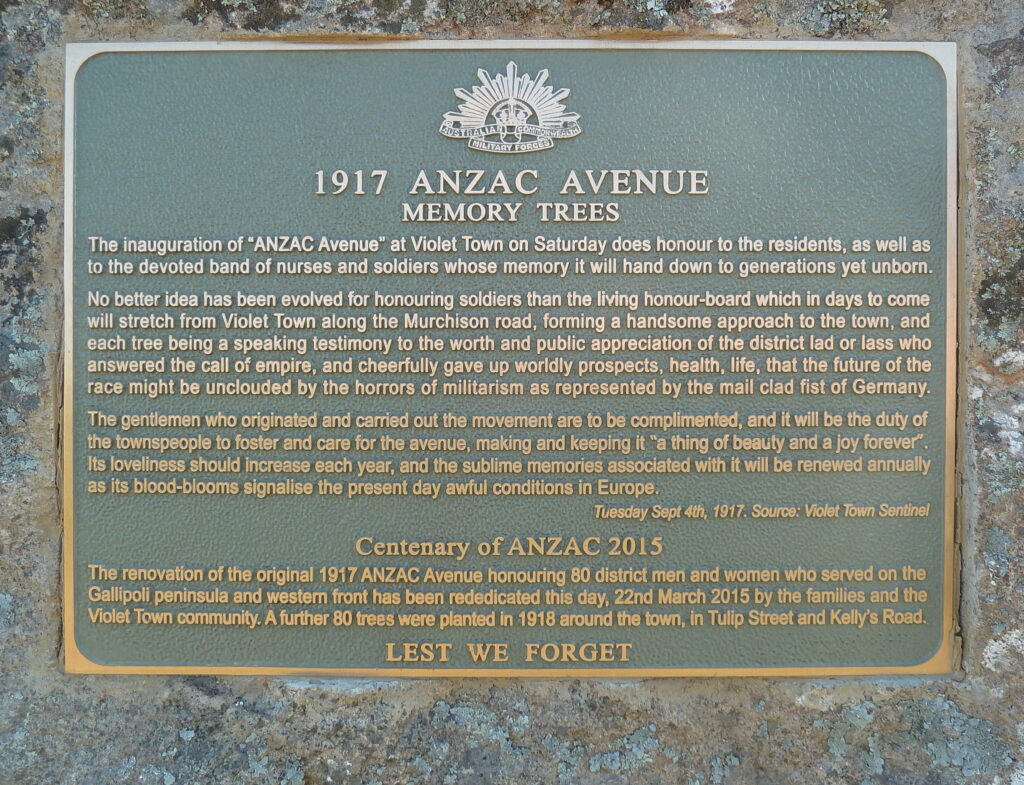
Violet Town’s commitment to honouring service, sacrifice and suffering is also illustrated by their Boer War memorial monument and several honour roll boards.
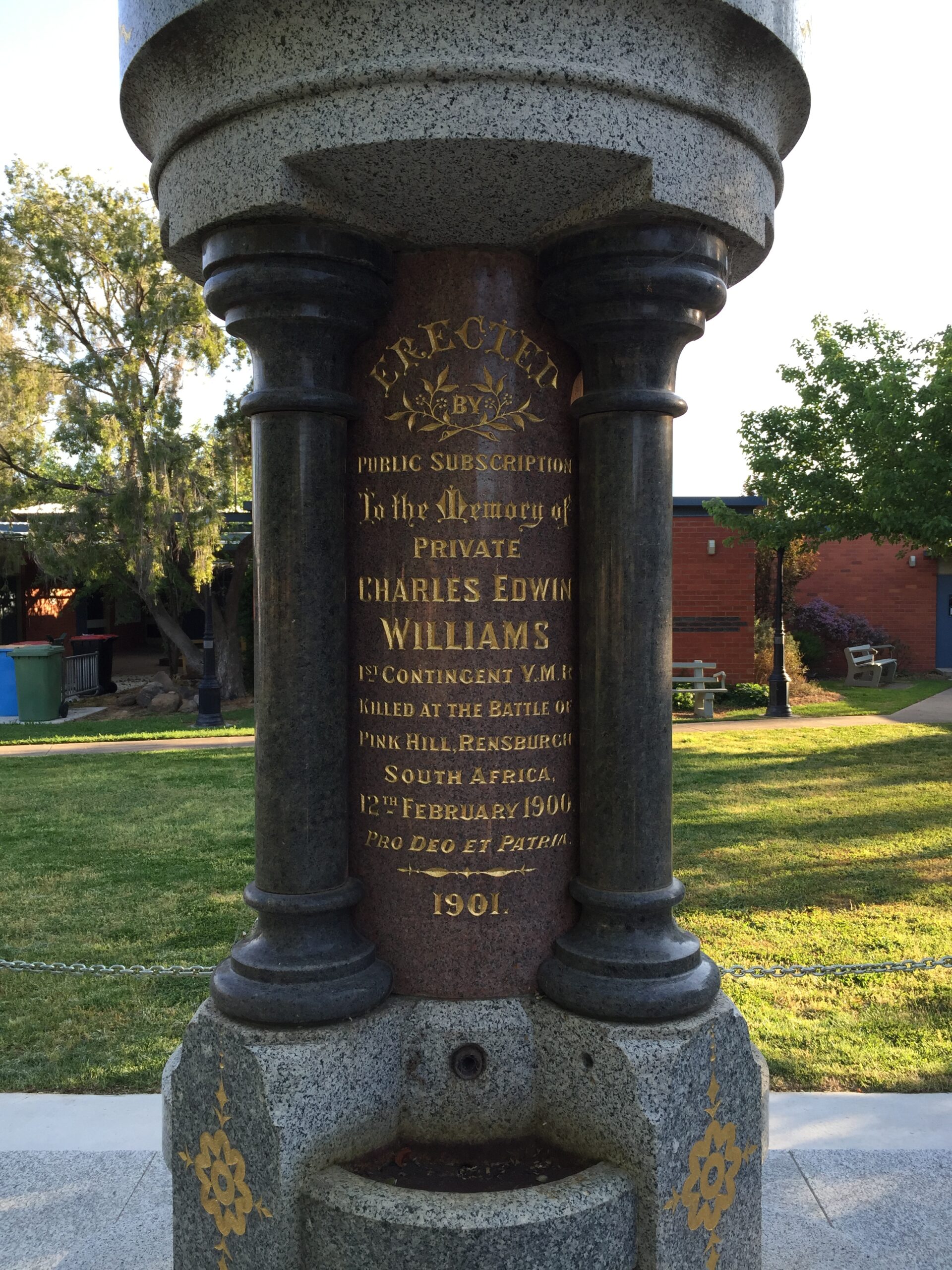 | 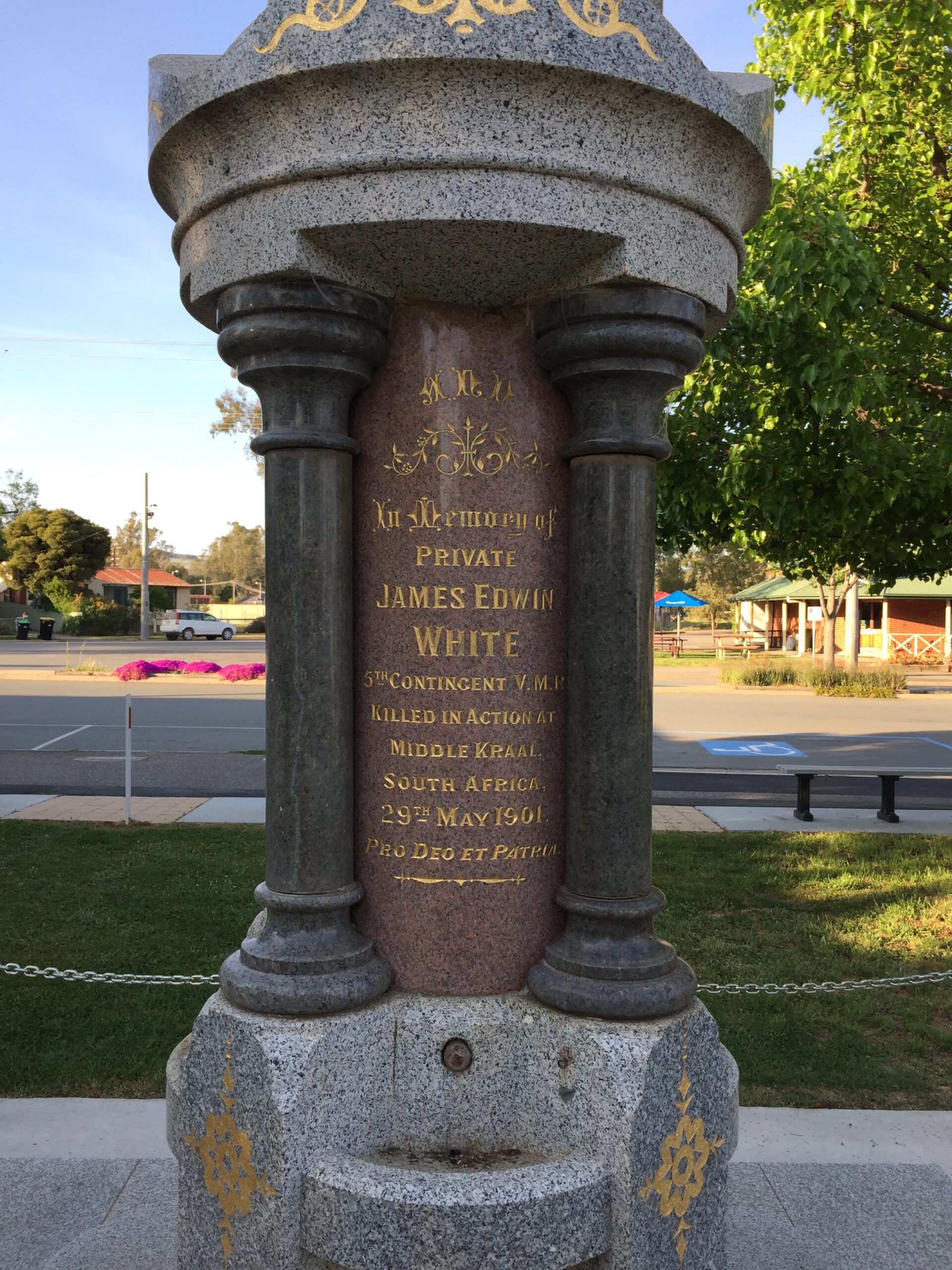 |
and is now the focus for Anzac Day and Remembrance ceremonies.


